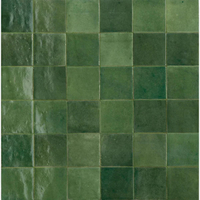It's unconventional! This centuries-old trick for making small rooms feel bigger is having a revival
It might feel a little unusual, but this wall covering choice can make magic in tiny spaces, according to an architect
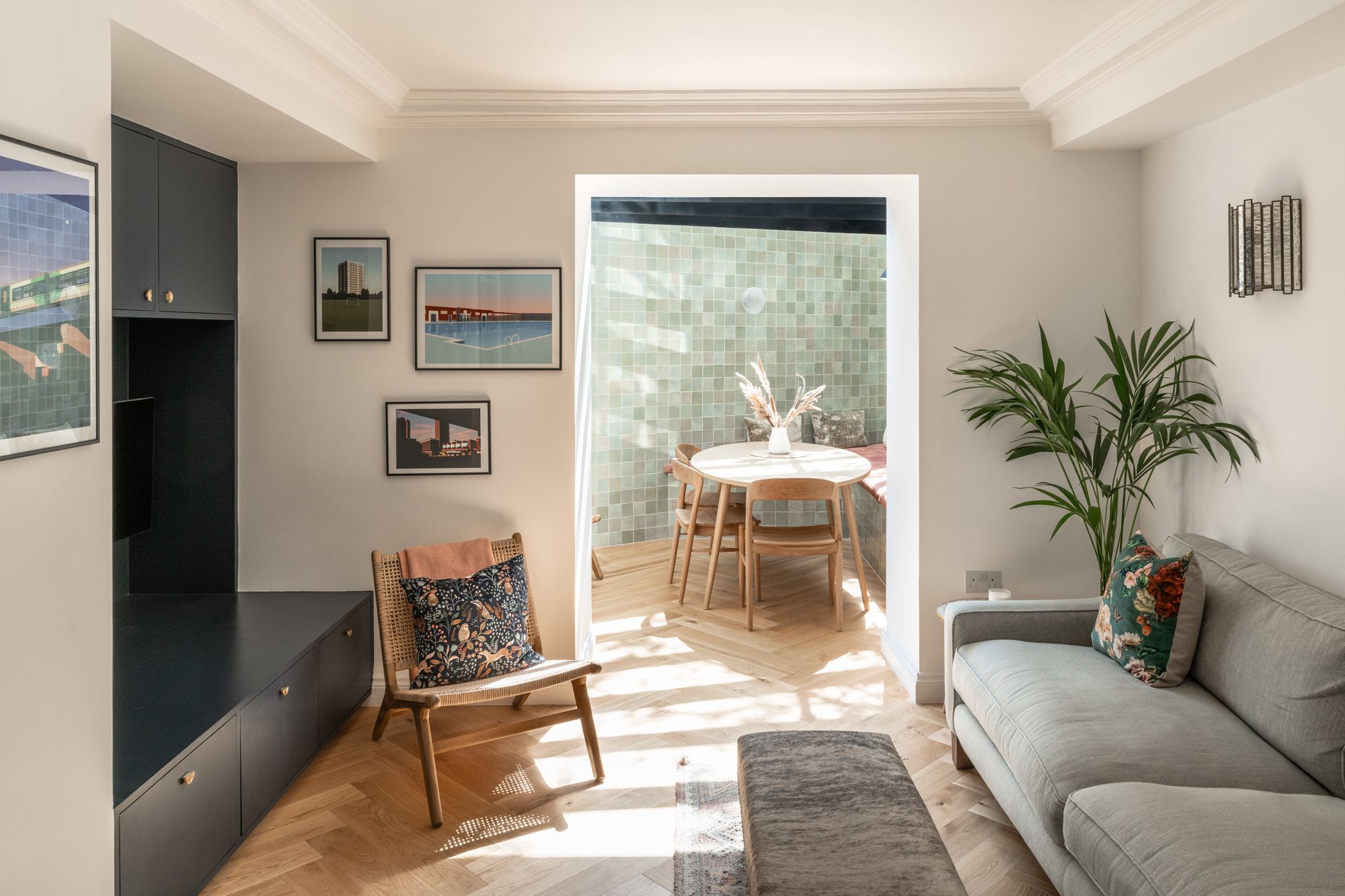

Did you know that the onset of Seasonal Affective Disorder is thought to peak in November? It's possibly not a surprise that this month has the most cases of this form of seasonal depression - after all, in many parts of the Northern hemisphere, it means dark mornings, dark evenings and flat grey days. The good news is, then, that we're almost out the other side, but that doesn't necessarily mean we're going to see an end to the sort of dull weather that saps the energy from our homes.
In searching for a solution for the darkest, dreariest rooms in my own small home that suffer the worst at this time of year, I came across an unconventional idea for a wallcovering that promises to transform how a room feels on days with even the most uninspiring weather outside.
It's an interior design trend that, I believe, is on the rise, and thankfully, it can look particularly stylish and design-forward. The big question is: are you ready to tile your living room walls?
What can tiled walls do for a small space?
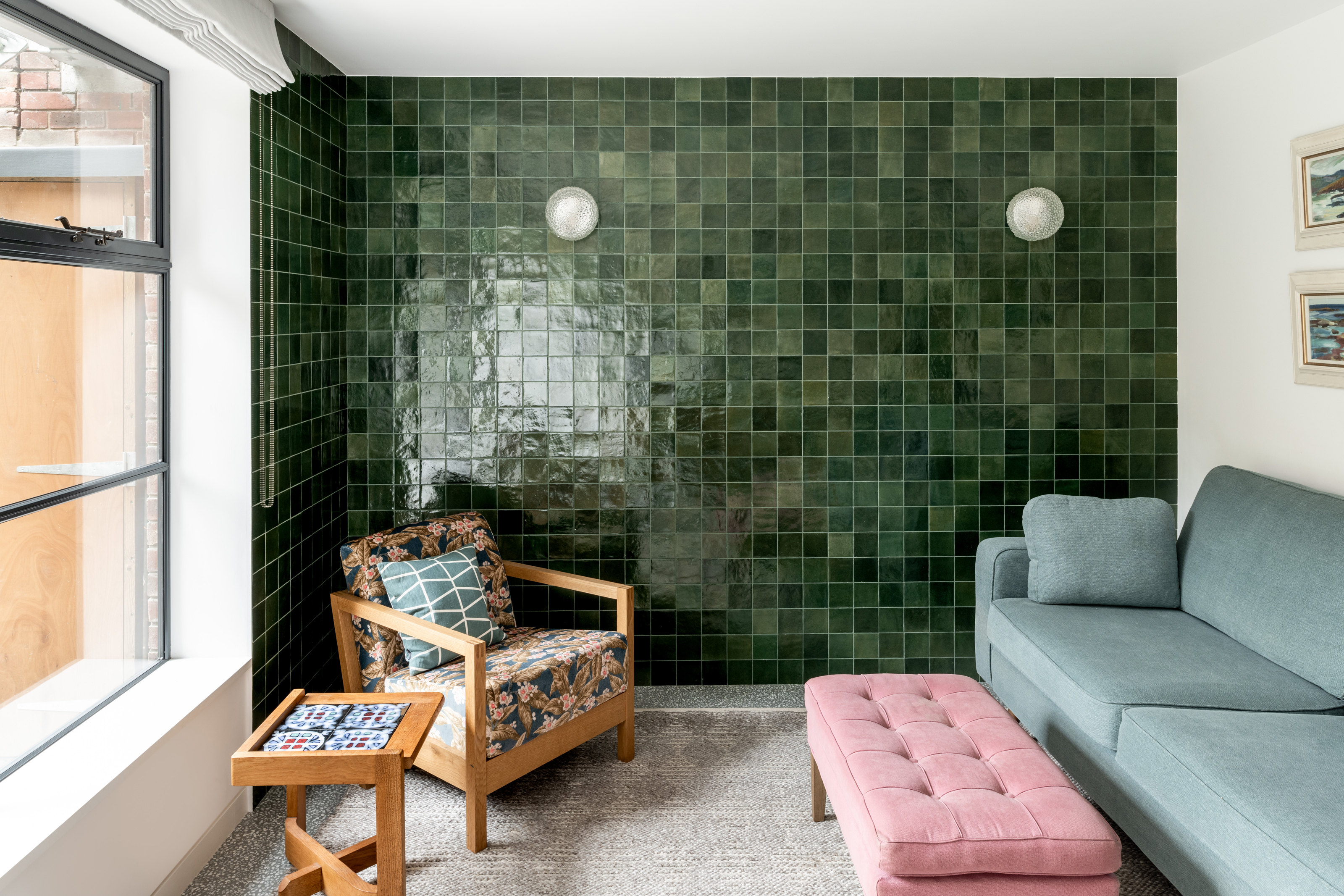
You'll commonly see whole tiled walls in bathrooms and kitchens, but less so in rooms like bedrooms, living rooms and dining rooms – yet, for architect Matthew Wood, founder of London-based MW Architects, it's a signature design he implements to make small, dark rooms feel brighter that he says is based on a 'Victorian technique for reflecting light down internal courtyards.'
'Glazed tiles are partially reflective which of course helps bounce light,' he tells us. But it's not just as simple as putting any old tile on the walls. Texture is equally important in making this idea so successful in his designs. 'As well as interest, light on texture creates the effect of depth that increases the sense of space.'
This means using something like a Zellige tile – a handmade tile that tends to produce an uneven surface through non-standardized thicknesses and has natural color variation.
Be The First To Know
The Livingetc newsletters are your inside source for what’s shaping interiors now - and what’s next. Discover trend forecasts, smart style ideas, and curated shopping inspiration that brings design to life. Subscribe today and stay ahead of the curve.
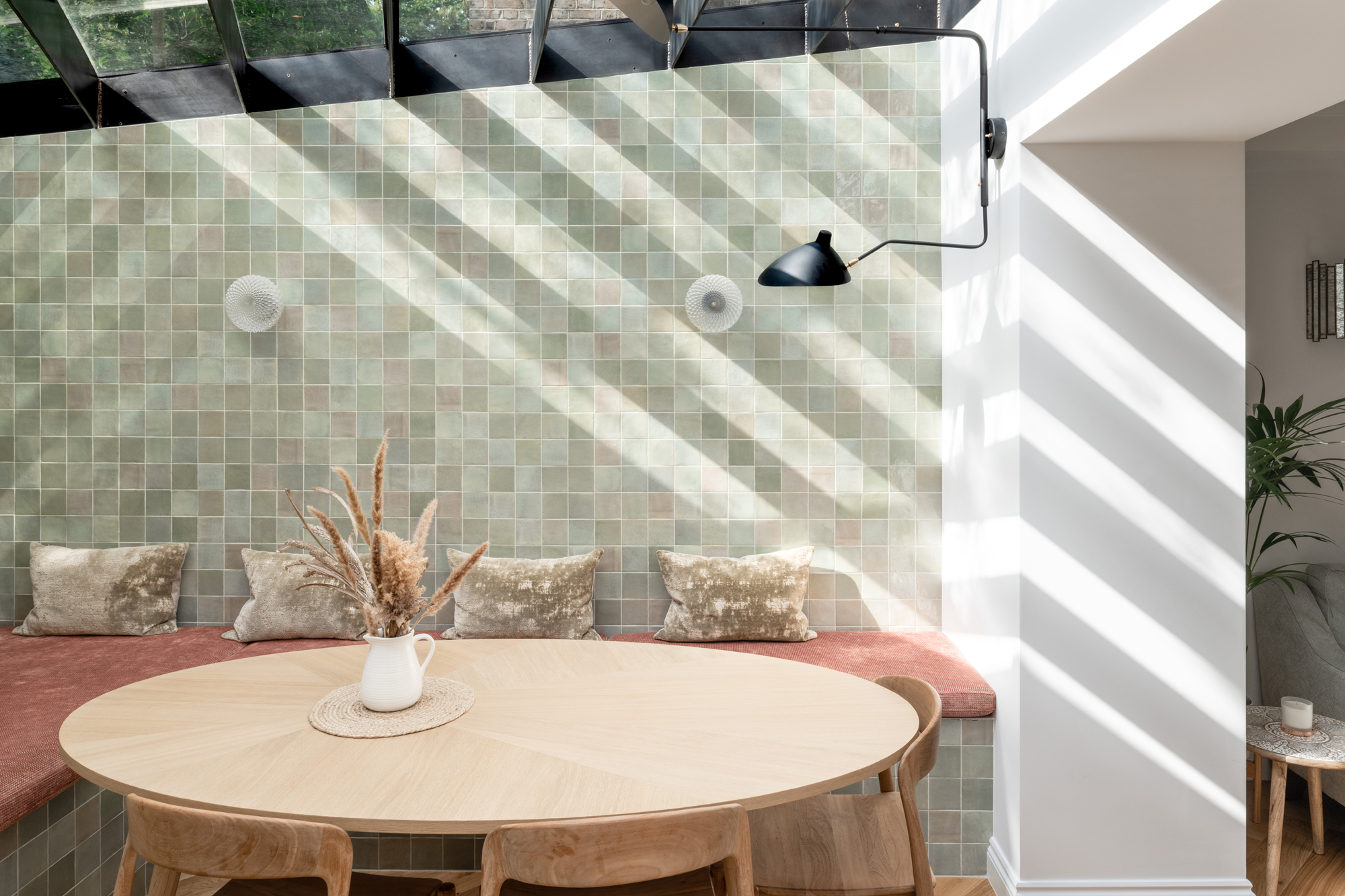
As well as the dark green-tiled small living room above, Matthew has also implemented the idea in this small dining room which, despite having a slim-lined glazed roof, is on the lower ground floor of this home. This means it's flanked by tall buildings that can block natural light from entering at certain times of the day.
Regardless, the architect looked to this wall covering idea to make the very most of the light available to it, no matter what time of day. 'The walls had to have texture for the light to wash over,' he tells us. 'This creates a dynamic effect of changing light and reflection.'
You can see the appeal. Where on a dull day, white walls can feel grey-washed and lifeless, these walls retain a depth and sheen regardless that ensures that they never feel flat.
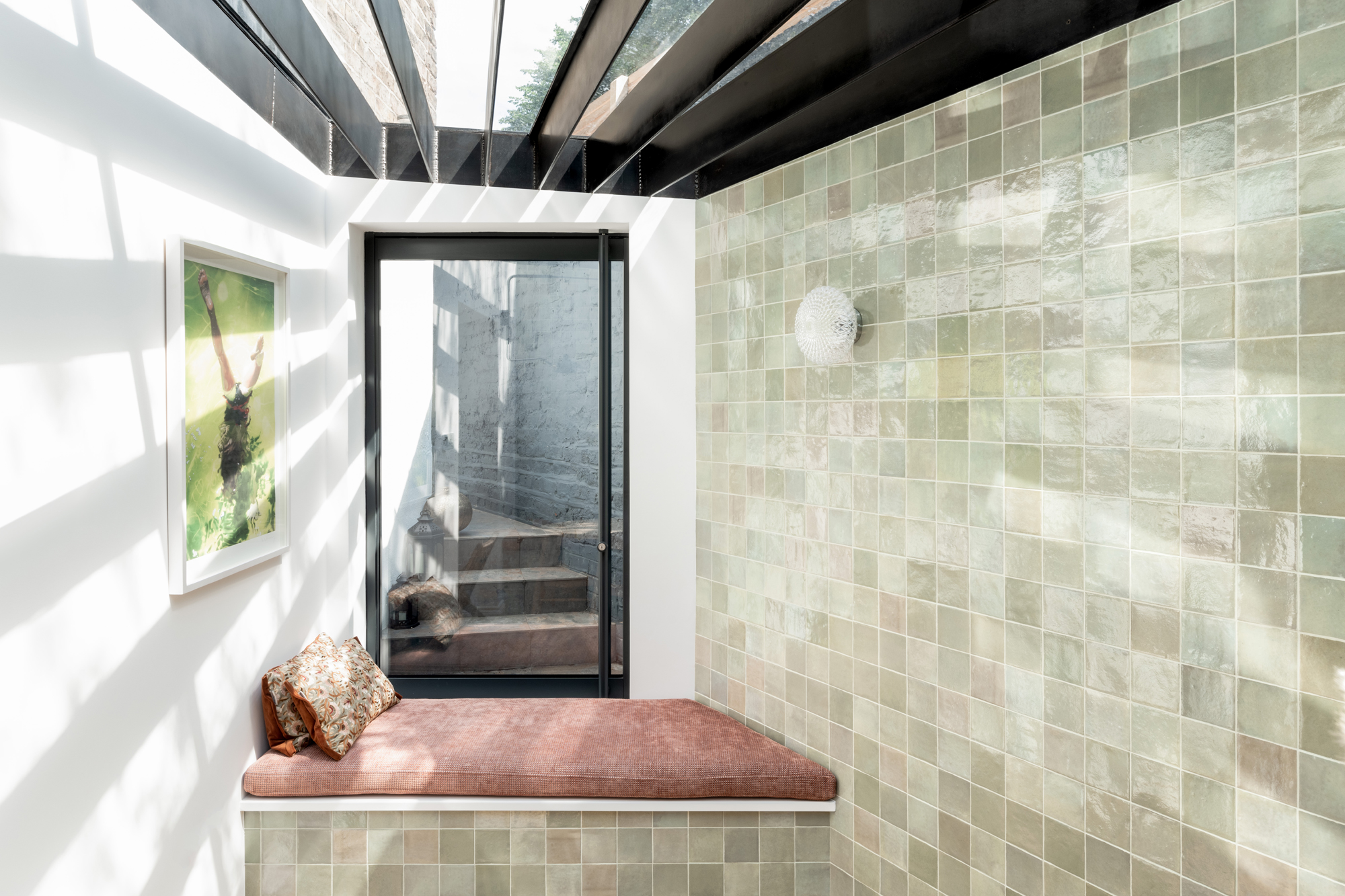
However, this isn't the only way in which this design functions to help this home's small, dark spaces feel brighter and happier. It provides a sightline from the even darker living room adjoining it, designed in a way to make the space feel like a 'glade' that the existing darker rooms focus on.
'Pools of light in a natural environment such as in a forest glade help to punctuate space,' Matthew explains. 'It is a focal point and a natural draw where the connection to the sky and the sun can be fully experienced.'
For a room that has no sightlines to green spaces, a key Biophilic design idea for calming, joyful spaces, the design of this room creates its own kind of nature. 'As the scheme developed and the materials were being curated the variance in the green Zellige tiles felt more and more like dappled light through leaves and the glade concept grew, tying the last few elements of furniture, light fittings and soft furnishings together.'
How much do Zellige tiles cost?
Zellige tiles tend not to be cheap, largely down to the processes used to make them and their appeal for luxury homes, which can make this small space idea a little more challenging. Generally, Zellige tiles can range between $50-$100 per 6 square feet. However, there are some cheaper 'Zellige-style' porcelain tiles on the market, which can be used to recreate the effect.
It's also the sort of idea that lends itself well to an accent wall, following Matthew's advice in choosing a wall that has an interaction with the natural light your room does get.
Ceramic Zellige tiles, Home Depot
These Zellige tiles from Home Depot aren't necessarily cheap, but at $54 per 5.81 square foot, they're cheaper than many Zellige tiles on the market.

Hugh is Livingetc.com’s editor. With 8 years in the interiors industry under his belt, he has the nose for what people want to know about re-decorating their homes. He prides himself as an expert trend forecaster, visiting design fairs, showrooms and keeping an eye out for emerging designers to hone his eye. He joined Livingetc back in 2022 as a content editor, as a long-time reader of the print magazine, before becoming its online editor. Hugh has previously spent time as an editor for a kitchen and bathroom magazine, and has written for “hands-on” home brands such as Homebuilding & Renovating and Grand Designs magazine, so his knowledge of what it takes to create a home goes beyond the surface, too. Though not a trained interior designer, Hugh has cut his design teeth by managing several major interior design projects to date, each for private clients. He's also a keen DIYer — he's done everything from laying his own patio and building an integrated cooker hood from scratch, to undertaking plenty of creative IKEA hacks to help achieve the luxurious look he loves in design, when his budget doesn't always stretch that far.
-
 My 10 Favorite Designs at Milan Design Week 2025 — Out of the Hundreds of Pieces I Saw
My 10 Favorite Designs at Milan Design Week 2025 — Out of the Hundreds of Pieces I SawThere is a new elegance, color, and shape being shown in Milan this week, and these are the pieces that caught my eye
By Pip Rich
-
 Iridescence Is Chrome’s More Playful, Hard-to-Define Cousin — And You're About to See It Everywhere
Iridescence Is Chrome’s More Playful, Hard-to-Define Cousin — And You're About to See It EverywhereThis kinetic finish signals a broader shift toward surfaces that move, shimmer, and surprise. Here's where to find it now
By Julia Demer
